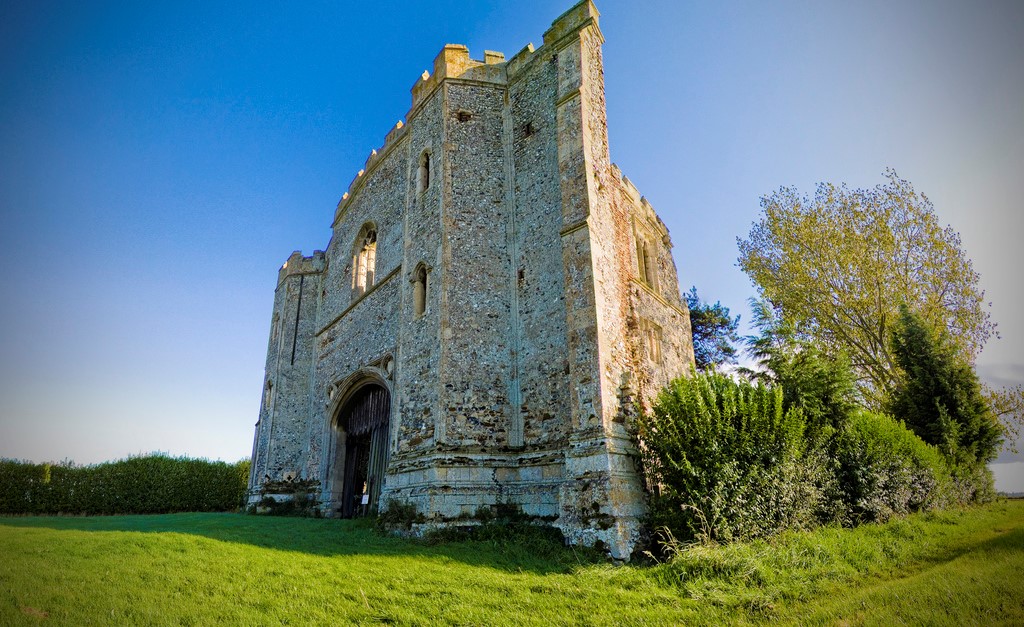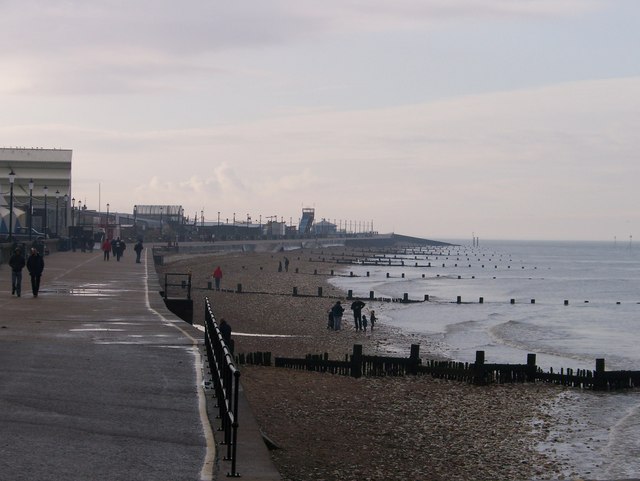|
Pentney Priory
Pentney Priory was an Augustinian priory at Pentney in the district of King's Lynn and West Norfolk, Norfolk, England. The ruins of the priory, mostly comprising the flint-built gatehouse, are Grade I listed. The Priory was founded c.1130 by Robert de Vaux and dedicated to the Holy Trinity, Blessed Virgin Mary and Mary Magdalene. In 1468 Walter Hart, Bishop of Norwich, united Pentney with Wormegay Priory with the consent of both establishments, Wormgay becoming a cell of Pentney. Pentney Priory was finally dissolved in 1537 as part of the Dissolution of the Monasteries under King Henry VIII. Prior Codde, prior at the time, was awarded a pension of £24 and appointed warden of the Hospital of St Giles, Norwich. The property was granted to Thomas Manners, 1st Earl of Rutland in 1538/9 and ultimately became incorporated into Abbey Farm, which now occupies the site. Stone from the Priory has been used in Abbey Farm and its outbuildings on the site, as well as other buildings in th ... [...More Info...] [...Related Items...] OR: [Wikipedia] [Google] [Baidu] |
Pentney
Pentney is a village and civil parish in the English county of Norfolk, located about south east of King's Lynn placing it about halfway between King's Lynn and Swaffham on the A47 road. It covers an area of and had a population of 387 in 184 households at the 2001 census, increasing to 544 at the 2011 Census. For the purposes of local government, it falls within the district of King's Lynn and West Norfolk. It is in the valley of the River Nar, a tributary of the River Great Ouse. The age of the village is unknown, but it dates at least to the 3rd or 4th centuries CE, from which time there is evidence of a Romano-British local pottery industry. A Roman road and settlement in Pentney ran close to the river Nar The name suggests that Pentney was at one time an island: one theory for the etymology is Penta's / Penda's Island, from the Anglo-Saxon ''Pendan-ig'', the ''ig'' being equivalent to Old Norse ''ey'' = island (Pentney is on drained waterlands). History Augustinian Pr ... [...More Info...] [...Related Items...] OR: [Wikipedia] [Google] [Baidu] |
King's Lynn And West Norfolk
King's Lynn and West Norfolk is a local government district with borough status in Norfolk, England. Its council is based in the town of King's Lynn. The population of the Local Authority at the 2011 Census was 147,451. History The district was formed in 1974 by the merger of the Municipal Borough of King's Lynn, Hunstanton and Downham Market urban districts along with Docking Rural District, Downham Rural District, Freebridge Lynn Rural District and Marshland Rural District. The district was originally known as just West Norfolk, and adopted its present name in 1981. Politics Elections to the borough council are held every four years, with all of the 55 councillors, representing 42 wards, on the council being elected at each election. After being under no overall control from the 1999 election, the Conservative party gained a majority at the 2003 election and has held one ever since, although losing a large number of seats due to the resurgence of the Independent Group ... [...More Info...] [...Related Items...] OR: [Wikipedia] [Google] [Baidu] |
Norfolk
Norfolk () is a ceremonial and non-metropolitan county in East Anglia in England. It borders Lincolnshire to the north-west, Cambridgeshire to the west and south-west, and Suffolk to the south. Its northern and eastern boundaries are the North Sea, with The Wash to the north-west. The county town is the city of Norwich. With an area of and a population of 859,400, Norfolk is a largely rural county with a population density of 401 per square mile (155 per km2). Of the county's population, 40% live in four major built up areas: Norwich (213,000), Great Yarmouth (63,000), King's Lynn (46,000) and Thetford (25,000). The Broads is a network of rivers and lakes in the east of the county, extending south into Suffolk. The area is protected by the Broads Authority and has similar status to a national park. History The area that was to become Norfolk was settled in pre-Roman times, (there were Palaeolithic settlers as early as 950,000 years ago) with camps along the highe ... [...More Info...] [...Related Items...] OR: [Wikipedia] [Google] [Baidu] |
England
England is a country that is part of the United Kingdom. It shares land borders with Wales to its west and Scotland to its north. The Irish Sea lies northwest and the Celtic Sea to the southwest. It is separated from continental Europe by the North Sea to the east and the English Channel to the south. The country covers five-eighths of the island of Great Britain, which lies in the North Atlantic, and includes over 100 smaller islands, such as the Isles of Scilly and the Isle of Wight. The area now called England was first inhabited by modern humans during the Upper Paleolithic period, but takes its name from the Angles, a Germanic tribe deriving its name from the Anglia peninsula, who settled during the 5th and 6th centuries. England became a unified state in the 10th century and has had a significant cultural and legal impact on the wider world since the Age of Discovery, which began during the 15th century. The English language, the Anglican Church, and Engli ... [...More Info...] [...Related Items...] OR: [Wikipedia] [Google] [Baidu] |
Robert II De Vaux Of Pentney
Robert II de Vaux of Pentney also known as Robert de Vallibus, Lord of Pentney, was a prominent 12th-century noble. He succeeded to the lands in Norfolk, Suffolk and Essex in England, held by his father Robert which had been received from Roger Bigod after the Norman conquest of England. Robert was the founder of the Augustinian Pentney Priory, dedicated to the Holy Trinity, St Mary and St Magdalene, which he established c.1130, for the souls of Agnes his wife and their children. He was succeeded by his eldest son William. Marriage and issue He married Agnes, daughter of Ranulf Fitz Walter and Matilda de Lanquetot, they are known to have had the following issue: *William de Vaux *Oliver de Vaux *Henry de Vaux Notes Citations References * * * {{DEFAULTSORT:Vaux, Robert de 12th-century English people Robert The name Robert is an ancient Germanic given name, from Proto-Germanic "fame" and "bright" (''Hrōþiberhtaz''). Compare Old Dutch ''Robrecht'' and Old Hig ... [...More Info...] [...Related Items...] OR: [Wikipedia] [Google] [Baidu] |
Walter Hart
Walter Hart (or Walter Lyhert; died 24 May 1472) was a medieval Bishop of Norwich. He was Provost of Oriel College, Oxford Oriel College () is a constituent college of the University of Oxford in Oxford, England. Located in Oriel Square, the college has the distinction of being the oldest royal foundation in Oxford (a title formerly claimed by University College, ..., from 1435 to 1446. He was nominated as bishop 24 January 1446 and was consecrated on 27 February 1446. He died on 24 May 1472.Fryde, et al. ''Handbook of British Chronology'' p. 262 The executors of his will are named as William Pykenham, arch deacon of Suffolk, John Bulman, Robert Hober, Henry Smyth, and another (illegible). He features in the '' Paston Letters'', especially their correspondence in 1469, when he was drawn into the efforts by her mother and brothers to prevent Margery Paston from marrying their bailiff Richard Calle. Citations References * Bishops of Norwich 1472 ... [...More Info...] [...Related Items...] OR: [Wikipedia] [Google] [Baidu] |
Bishop Of Norwich
The Bishop of Norwich is the ordinary of the Church of England Diocese of Norwich in the Province of Canterbury. The diocese covers most of the county of Norfolk and part of Suffolk. The bishop of Norwich is Graham Usher. The see is in the city of Norwich and the seat is located at the Cathedral Church of the Holy and Undivided Trinity. The bishop's residence is Bishop's House, Norwich. It is claimed that the bishop is also the abbot of St Benet's Abbey, the contention being that instead of dissolving this monastic institution, Henry VIII united the position of abbot with that of bishop of Norwich, making St Benet's perhaps the only monastic institution to escape ''de jure'' dissolution, although it was despoiled by its last abbot. East Anglia has had a bishopric since 630, when the first cathedral was founded at Dommoc, possibly to be identified as the submerged village of Dunwich. In 673, the see was divided into the bishoprics of Dunwich and Elmham; which were reuni ... [...More Info...] [...Related Items...] OR: [Wikipedia] [Google] [Baidu] |
Wormegay Priory
Wormegay Priory was a priory in Norfolk, England. It was founded by William de Warenne (justice), William de Warenne, a royal justice. In 1468 Walter Hart, Bishop of Norwich, united Wormegay with Pentney Priory with the consent of both establishments, Wormgay becoming a cell of Pentney. References Monasteries in Norfolk {{UK-Christian-monastery-stub ... [...More Info...] [...Related Items...] OR: [Wikipedia] [Google] [Baidu] |
King Henry VIII
Henry VIII (28 June 149128 January 1547) was King of England from 22 April 1509 until his death in 1547. Henry is best known for his six marriages, and for his efforts to have his first marriage (to Catherine of Aragon) annulled. His disagreement with Pope Clement VII about such an annulment led Henry to initiate the English Reformation, separating the Church of England from papal authority. He appointed himself Supreme Head of the Church of England and dissolved convents and monasteries, for which he was excommunicated by the pope. Henry is also known as "the father of the Royal Navy" as he invested heavily in the navy and increased its size from a few to more than 50 ships, and established the Navy Board. Domestically, Henry is known for his radical changes to the English Constitution, ushering in the theory of the divine right of kings in opposition to papal supremacy. He also greatly expanded royal power during his reign. He frequently used charges of treason and h ... [...More Info...] [...Related Items...] OR: [Wikipedia] [Google] [Baidu] |
Great Hospital
The Great Hospital is a medieval hospital that has been serving the people of Norwich in Norfolk, UK, since the 13th century. It is situated on a site in a bend of the River Wensum to the north-east of Norwich Cathedral. Founded in 1249 by Bishop Walter de Suffield, the hospital was originally known as Giles's Hospital. What makes the hospital notable today is its history of continuous care, the range of existing medieval buildings on the hospital grounds (most of which are still in use), and the extensive archives that record the hospital's long history. History The original beneficiaries of the new hospital in 1249 were aged priests, poor scholars, and sick and hungry paupers. Clerics remained unmarried in this period, so they had no family to support them in old age. The poor scholars, boys selected on merit from local song schools, were to receive a daily meal during term times. This was to continue until the boy had achieved a good grasp of Latin. With this help, bright bu ... [...More Info...] [...Related Items...] OR: [Wikipedia] [Google] [Baidu] |





